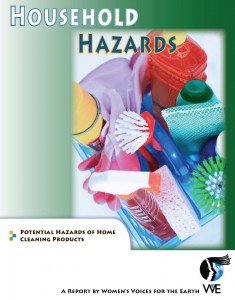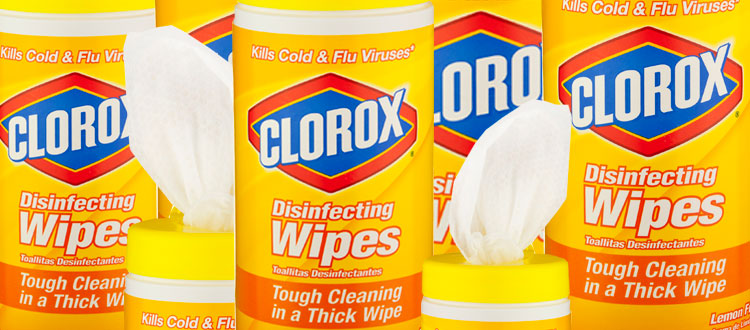Common household cleaning chemicals linked to asthma and reproductive harm
Monoethanolamine (MEA) is a surfactant found in some laundry detergents, all-purpose cleaners and floor cleaners and is a known inducer of occupational asthma.
Ammonium quaternary compounds are disinfectants found in some disinfectant sprays and toilet cleaners that have been identified as inducers of occupational asthma.
Glycol ethers, such as 2-butoxyethanol, are solvents commonly found in glass cleaners and all-purpose spray cleaners that have been linked to reduced fertility and low birth weight in exposed mice.
Alkyl phenol ethoxylates (APEs) are surfactants found in laundry detergents, stain removers, and all-purpose cleaners, which have been found to reduce embryo survival in fish, and alter tadpole development. APEs are commonly detected as contaminants in rivers and streams, and have also been found in household dust.
Phthalates are carriers for fragrance in glass cleaners, deodorizers, laundry detergents and fabric sof teners, which have been linked to adverse effects on male children, reduced sperm count in adult men, and increased allergic symptoms and asthma in children.
How clean is clean? We all have different answers and personal preferences regarding the cleanliness of our homes and surroundings. The many types and brands of cleaning products available on store shelves is staggering. In most cases, when we choose a cleaning product, we are primarily concerned with whether or not it will do the job, going on the assumption that if a product is sold in the grocery store, it must be safe for use in our homes. This report questions that assumption. Household cleaning chemicals, like tens of thousands of chemicals found in the consumer marketplace, are available to the consumer with virtually no information on the potential consequences for human health and little oversight by the government.
Household Hazards was written to provide information on certain chemicals in cleaning products which may pose health hazards. Specifically, it looks at the research on cleaning chemicals such as monoethanolamine (MEA) and ammonium quaternary compounds linked to asthma, and glycol ethers, alkyl phenol ethoxylates and phthalates linked to reproductive harm (e.g. birth defects and fertility problems).
Some research has associated these cleaning chemicals with health impacts, such as occupational asthma in cleaning workers, so it is reasonable to question their use in household cleaning products. Other research in laboratory settings links exposure to certain cleaning chemicals with reproductive harm, such as birth defects or fertility problems in animals. While the impacts of chronic exposure to these chemicals on reproductive harm in humans have not been fully researched, the scientific data compiled in this report, while inconclusive, does present a valid cause for concern. This report also highlights the need for additional studies to fully ascertain the safety of using household cleaning chemicals over the course of a lifetime. Many consumers, especially those who have asthma or women of childbearing age, are accustomed to making choices to avoid exposure to chemicals with potential for harm. This report is intended to provide additional information to consumers who may prefer a precautionary approach to using certain cleaning products in their home.
Download the full report, Household Hazards
Household Cleaning Products: What Every Woman Should Know






